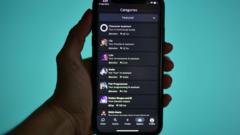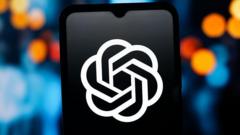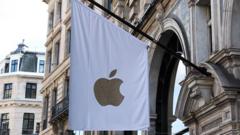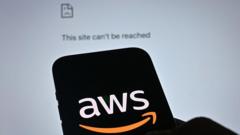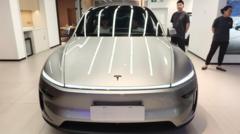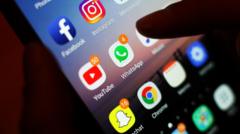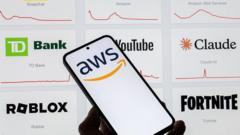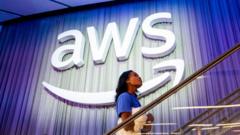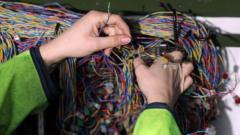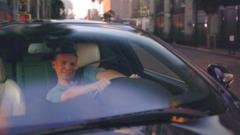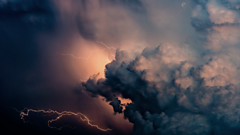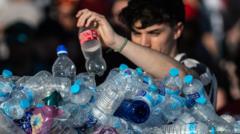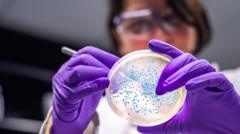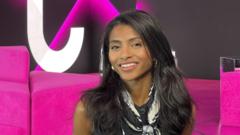The Verge is about technology and how it makes us feel. Founded in 2011, we offer our audience everything from breaking news to reviews to award-winning features and investigations, on our site, in video, and in podcasts.
With the holidays quickly approaching, everyone will soon be on the hunt for gifts and the fastest way to get them. Thankfully, many retailers offer generous shipping policies for their products, with some even providing free two-day shipping or even same-day delivery if you’re willing to pay a little extra. And just in case the gift […]
With the holidays quickly approaching, everyone will soon be on the hunt for gifts and the fastest way to get them. Thankfully, many retailers offer generous shipping policies for their products, with some even providing free two-day shipping or even same-day delivery if you’re willing to pay a little extra. And just in case the gift you choose isn’t quite right, many retailers offer extended return policies so your giftee can get something more to their liking. For your convenience, we’ve compiled the current shipping and return policies for all the big-name retailers, from Amazon to Walmart. A few of them already have policies in place regarding the holidays, but we’ll be keeping tabs on them and updating our list accordingly. Hopefully, knowing more about how much leeway you have to make a return will help lessen that inevitable holiday angst (fingers crossed). Amazon Apple Target Walmart B&H Best Buy Costco GameStop Dell DJI Google HP Microsoft Newegg Sam’s Club Sonos Amazon Shipping: Same-day delivery is not available on Thanksgiving, Christmas, or New Year’s (it’s also limited on Black Friday). However, Prime members get free same-day delivery on qualifying orders in qualifying ZIP codes provided they meet the “minimum qualifying dollar threshold” (which varies by location) of eligible items in their cart. One-Day and Two-Day Delivery with no minimum purchase amount required is also available to Prime members for qualifying products. Non-Prime buyers will find shipping options on the order page of each specific product. Returns: As part of its holiday promotional period, Amazon says most items purchased between November 1st and December 31st can be returned until January 31st, 2026. Apple products, however, must be returned by January 15th, 2026. Note that this policy applies to both Prime and non-Prime buyers. Apple Shipping: Apple has yet to provide details on its holiday shipping policy; however, last year, it offered free delivery of in-stock items that hadn’t been engraved by Christmas Eve if you ordered before 9PM ET on December 21st. Apple also offers free next-day or two-hour delivery from local stores in most metro areas for an additional fee, or you can opt to pick up purchases yourself by visiting your local Apple Store. Returns: Purchases made after December 25th are subject to the usual terms and conditions, and must be returned within 14 calendar days of your initial purchase date. Target Shipping: Target offers free two-day shipping on many orders if you spend $35 or more or use your Target RedCard. Same-day delivery costs $9.99 per order, but it’s included with a Target Circle 360 membership ($10.99 a month / $99 a year). Your mileage may vary for same-day delivery availability based on the item and your location. Returns: Target offers an extended return policy for electronics and entertainment items purchased between November 1st and December 24th, allowing you to return them until January 24th, 2026, for a full refund. Mobile phones and Apple products (including Beats products) purchased during the same window must be returned by by January 9, 2026. Target’s standard return policy applies for most other items, with a generous 90-day window for third-party products and up to a year for Target-branded products with a receipt. Walmart Shipping: Walmart has yet to publish its official holiday shipping policy. Typically, though, Walmart provides free next-day delivery in eligible ZIP codes, free two-day delivery, and free standard shipping for eligible orders of $35 or more. Walmart Plus subscribers also receive free next-day and two-day shipping with no order minimum. Returns: Most items purchased between October 1st and December 31st may be returned until January 31st, 2026. Some exceptions, like smartphones, may apply. B&H Shipping: B&H offers free two-day and next-day shipping on select items. Most other products are eligible for free standard shipping (that’s one to seven business days), and free expedited shipping (one to three business days) is generally available for items over $49. Returns: B&H allows returns within 30 days of the delivery date, provided the items are in new condition and still housed in their original packaging. Best Buy Shipping: Best Buy is offering free next-day and two-day shipping on qualifying orders for My Best Buy Plus and My Best Buy Total members. Non-members, meanwhile, can get free next-day shipping on qualifying orders totaling $35 or more. Returns: Best Buy offers a 15-day return window for most products, while “activatable” items that come with third-party contracts — such as smartphones and wearables — must be returned within 14 days. My Best Buy Plus and My Best Buy Total members have up to 60 days to make returns, though the 14-day limit still applies to activatable products. Costco Shipping: At Costco, shipping fees vary depending on the product and shipping method, although shipping is often provided free of charge. The wholesale retailer also offers a variety of delivery options, including “white glove” service for larger appliances. Same-day delivery is also available on some items via Costco’s partnership with Instacart. Returns: Costco generally has an open return policy, except for electronics such as TVs and computers, which have a 90-day return window. There are other exceptions, though, which are listed on its return page. GameStop Shipping: GameStop currently offers free shipping on orders over $35. It also offers same-day delivery in certain locations if you order from your local store at least three hours before the store closes. Returns: GameStop hasn’t listed its holiday return policy yet, but products can be returned within 15 days, provided the packages are unopened and you have the receipt. Pro members, meanwhile, get 30 days. Dell Shipping: Most Dell products come with free standard shipping (no minimum purchase necessary), and some gifts may ship for free in time for Christmas if you place your order by December 19th. The delivery window can vary based on your order, but Dell also offers expedited shipping options, as well as a delivery date estimate based on the zip code you provide at checkout. Orders placed by December 23rd with qualifying express delivery windows are expected to arrive before December 25th. Returns: As a part of Dell’s extended return policy, purchases made between November 1st and December 29th can be returned until January 15th, 2026. DJI Shipping: DJI offers free shipping on purchases of $149 or more. Otherwise, shipping fees are specified on the order form. Shipment times can vary for each product depending on availability. Returns: DJI offers returns within 14 days of receiving the purchase, provided the item remains in like-new condition or suffers from a manufacturing defect. Google Shipping: All standard orders qualify for free shipping with no minimum. Just note that this applies to the lowest-cost shipping available, which may not be the fastest. Returns: Google hasn’t announced any special holiday return policies yet. For now, all purchases are covered by the standard terms and conditions, which let you return most items within 15 days of receiving them. Nest Thermostats and Verizon contract phones, however, come with an extended 30-day return window. HP Shipping: For many items, standard shipping is free and will arrive at your door within three to six days. HP also offers expedited and priority shipping options for an additional fee. The company will not ship or deliver items on Christmas, Thanksgiving, or New Year’s Day. Returns: You can return most items purchased from HP’s website within 30 days of delivery. There are exceptions, though, and select items may be subject to a restocking fee of up to 15 percent. Microsoft Shipping: Most products sold through the online Microsoft Store include free two- or three-day shipping, with express shipping available for an additional fee. Returns: You can return most physical products purchased online for free through January 31, 2026, provided they’re in like-new condition. The item must be in its original packaging, with all parts, manuals, and other accessories included. Items exempt from this policy include digital gift cards, gift cards for services and subscriptions, and select hardware, such as the ROG Xbox Ally and HoloLens. Newegg Shipping: Many of Newegg’s items come with free shipping and are delivered within one to five business days; for details, check the individual product page. Returns: Qualifying items purchased between November 1st and December 31st can be returned or replaced until January 31st, 2026. Sam’s Club Shipping: According to the Sam’s Club FAQ, the shipping cost for most items varies based on the item’s size, weight, shipping method, and delivery address. Plus Members get free shipping on many online items, and same-day delivery or curbside pickup is available for free if you’re a Plus member ($110 a year) and place a qualifying order totaling $50 or more by 1PM local time. Club members ($50 a year) can pay $12 for same-day or next-day shipping, or get free curbside pickup on orders of $50 or more. Returns: Sam’s Club does not have a specified return period; however, some products may have specific return periods stated. For example, electronics and major appliances have a 90-day return window, while phones are subject to a 14-day return policy. Sonos Shipping: Sonos offers free shipping on all of its products, with in-stock items typically shipping the same day if they’re purchased by 11AM local time. You can also pay extra for two-day or express shipping. Returns: Sonos offers a 30-day return policy and even provides free return shipping. However, you must have bought the product directly from Sonos, and the return must be initiated within 30 days of receiving your purchase. The product must also include the original packaging and be in new or as-new condition to be eligible. Update, October 31st: Updated to reflect shipping deadlines / return policies as they pertain to the 2025 holiday season.
- Entertainment
- Gaming
- News
- Xbox
Microsoft’s new Xbox Full Screen Experience (FSE), which adds a console-like navigation experience to Windows PC gaming handhelds, is coming to another family of devices: the MSI Claw. As part of the latest Windows 11 Insider Preview Build, Microsoft is rolling out support for the Xbox FSE in preview to “MSI Claw models” today, the […]
Microsoft’s new Xbox Full Screen Experience (FSE), which adds a console-like navigation experience to Windows PC gaming handhelds, is coming to another family of devices: the MSI Claw. As part of the latest Windows 11 Insider Preview Build, Microsoft is rolling out support for the Xbox FSE in preview to “MSI Claw models” today, the company announced. FSE debuted on the Xbox Ally and Xbox Ally X earlier this month, and my colleague Sean Hollister ran into quite a few issues with it (and the new handhelds). If you’re interested in installing the Xbox FSE on your MSI Claw, you might want to wait until some of the problems are ironed out and until it’s available outside of the Windows Insider program. To turn on the Xbox FSE, “on supported devices, go to Settings > Gaming > Full screen experience, then select Xbox as your home app,” Microsoft says. “Once enabled, you can access FSE from Task View and Game Bar or configure your handheld to enter full screen experience on startup.” In today’s post, Microsoft says that “additional OEMs” will be enabling their handhelds to use the Xbox FSE “in the coming months,” and we already know that Lenovo’s Legion Go 2 is set to get it next year.
- Audio
- Microsoft
- News
- Tech
- Windows
Microsoft is bringing shared audio to Windows 11, allowing you to stream audio across two pairs of wireless headphones, speakers, earbuds, or hearing aids. The feature is built using the Bluetooth Low Energy (LE) audio codec, and it’s rolling out in preview to Windows 11 Insiders in the Dev and Beta channels. Shared audio comes […]
Microsoft is bringing shared audio to Windows 11, allowing you to stream audio across two pairs of wireless headphones, speakers, earbuds, or hearing aids. The feature is built using the Bluetooth Low Energy (LE) audio codec, and it’s rolling out in preview to Windows 11 Insiders in the Dev and Beta channels. Shared audio comes in handy if you’re watching a movie on a laptop with your friend or family member, or just want to show them new music that you can both stream inside your own wireless headsets. You can use shared audio by connecting Bluetooth LE-supported devices to your Windows 11 PC and then selecting the “Shared audio (preview) button in your quick settings menu. Microsoft introduced an LE Audio feature on Windows 11 in August, enabling higher audio quality while using a wireless headset in a game or call. Other device makers have added support for shared audio as well, with Google using the Bluetooth LE-based Auracast feature to broadcast audio from Android 16 devices to compatible hearing aids. The company later expanded this capability to allow Pixel 8 phones or newer to connect to two pairs of headphones at once. Samsung also began building Auracast into its phones with last year’s launch of the Galaxy S24. For now, shared audio in Windows 11 is only available on select Copilot Plus PCs, including the 13.8 and 15-inch Surface Laptops and the 13-inch Surface Pro. It’s coming to the Samsung Galaxy Book5 360, Galaxy Book5 Pro, 13-inch Surface Laptop, and others at a later date. You can also only use the feature with devices compatible with Bluetooth LE, such as the Samsung Galaxy Buds 2 Pro, Buds 3, Buds 3 Pro, and the Sony WH-1000XM6 wireless headphones. View Link
- Audio
- Cars
- Tech
- Transportation
Dolby Atmos, the dominant name behind spatial audio in theaters and the home, has become a fixture in luxury cars from the likes of Mercedes-Benz, Rivian, Cadillac, and Lucid priced upwards of $70,000. But now, Hyundai is including Dolby Atmos audio in the new entry-level Elexio EV - a China-exclusive (for now) SUV that costs […]
Dolby Atmos, the dominant name behind spatial audio in theaters and the home, has become a fixture in luxury cars from the likes of Mercedes-Benz, Rivian, Cadillac, and Lucid priced upwards of $70,000. But now, Hyundai is including Dolby Atmos audio in the new entry-level Elexio EV - a China-exclusive (for now) SUV that costs between RMB 119,800 and 149,800 (or $16,800 to $21,000). Unlike the more luxury vehicles that have included Atmos as part of a premium package, the Hyundai Elexio will offer it as standard on all trims through its six built-in speakers. There is the option of increasing that to eight speakers with an external amplifier … Read the full story at The Verge.
- Bose
- Deals
- Gadgets
- Headphones
- Tech
It’s almost November, and to celebrate, retailers like Amazon, Walmart, and Best Buy are dropping early Black Friday deals on everything from Apple devices to smartphones and video games. We’re also seeing some great deals on Bose headphones and earbuds, with many of the discounts matching previous all-time lows. Take, for instance, the latest Bose […]
You can save up to $160 off Bose headphones and earbuds right now. | Image: The Verge It’s almost November, and to celebrate, retailers like Amazon, Walmart, and Best Buy are dropping early Black Friday deals on everything from Apple devices to smartphones and video games. We’re also seeing some great deals on Bose headphones and earbuds, with many of the discounts matching previous all-time lows. Take, for instance, the latest Bose QuietComfort Earbuds, which are currently down to $129 ($50 off) in multiple colors at Amazon, Walmart, and Best Buy. Bose QuietComfort Earbuds (second-gen) Where to Buy: $179 $129 at Amazon $179 $129 at Best Buy $179 $129 at Bose The wireless earbuds deliver excellent active noise cancellation, over eight hours of battery life with ANC enabled, and support for multipoint connectivity, making it possible to pair them with two devices simultaneously. While they don’t sound quite as good as the Bose QuietComfort Ultra Earbuds, the QC Earbuds allow you to customize the audio to get the exact sound you want. The earbuds offer some unique software tricks, too, like a feature that turns the earbuds into a remote shutter for your phone’s camera. Bose QuietComfort Headphones Where to Buy: $359 $199 at Amazon $359 $199 at Best Buy $359 $199 at Walmart If you prefer over-ear headphones, you can grab the Bose QuietComfort Headphones for $199 ($160 off) in multiple colors at Amazon, Walmart, and Best Buy. That’s over 40 percent off and matches a previous all-time low. The QC Headphones feature ANC, up to 24 hours of battery life, and multipoint connectivity. While we haven’t reviewed this specific model, the upgraded QuietComfort Ultra Headphones are our favorite noise-canceling headphones for travel, and we’re generally fans of the line’s comfortable earcup cushions. Bose QuietComfort Ultra Headphones Where to Buy: $429 $329 at Amazon $429 $329 at Best Buy $429 $329 at Walmart Speaking of the QC Ultra Headphones, the first-generation model is currently down to $329 ($100 off) in multiple colors at Amazon, Walmart, and Best Buy, matching the drop we saw during Prime Big Deal Days. In his review, former senior reviewer Chris Welch said the noise-canceling headphones are light and comfortable, even for long stretches, and can be folded to make them easier to travel with. They also offer up to 24 hours of battery life and support the aptX Adaptive Bluetooth codec for improved sound quality on Android devices. Unfortunately, the second-generation QC Ultra Headphones aren’t on sale (yet), so you’ll have to drop $449 if you want the latest model. Other spooky deals Lego’s Spider-Man vs. Doc Ock Subway Train Scene recreates the legendary fight between the two foes in Spider-Man 2, and it’s currently down to an all-time low of $43.99 ($11 off) at Amazon and Target. The 393-piece set features a buildable subway train — complete with a removable roof — and comes with four minifigures, including Doc Ock with his four jointed tentacles. The Spider-Man minifigure comes with interchangeable masked and unmasked heads, so you can replay the iconic moment when the New York City passengers first learn his identity. The OnePlus Watch 3 in the 43mm configuration is back down to one of its lowest prices of $269.99 ($30 off) at OnePlus’ online storefront with code SPOOKY. The wearable retains everything we loved about its predecessor, like dual-frequency GPS and long battery life, but improves the experience with a rotating crown that scrolls and fun video watch faces. It can also provide a quick snapshot of your heart rate, blood oxygen levels, sleep quality, and more. You can nab the 46mm OnePlus Watch 3 for $319 ($30 off) with code SPOOKY if you want a larger display. Read our impressions. The Xbox Wireless Controller is back down to $39.99 ($25 off) at Amazon (white and black), Best Buy (white and black) and Target (white and black). While it lacks more advanced features like customizable buttons and sensitivity adjustments, it remains our favorite Xbox controller thanks to its simple, ergonomic design, which sets the standard for how a controller should look, feel, and work. It also takes AA batteries instead of featuring a built-in rechargeable cell, which may seem like a downgrade, but it means you won’t have to deal with a degraded battery down the road.
- News
- Policy
- Politics
- Security
- Tech
“We got hacked,” members of the University of Pennsylvania community were told in the subject line of several emails sent from addresses linked to its Graduate School of Education. The sender, apparently, was the potential hacker or hackers themselves. “The University of Pennsylvania is a dogshit elitist institution full of woke retards,” said the emails, […]
“We got hacked,” members of the University of Pennsylvania community were told in the subject line of several emails sent from addresses linked to its Graduate School of Education. The sender, apparently, was the potential hacker or hackers themselves. “The University of Pennsylvania is a dogshit elitist institution full of woke retards,” said the emails, which were received by several alumni including a Verge author who attended the University of Pennsylvania. “We have terrible security practices and are completely unmeritocratic. We hire and admit morons because we love legacies, donors, and unqualified affirmative action admits. We love breaking federal laws like FERPA (all your data will be leaked) and Supreme Court rulings like SFFA. Please stop giving us money.” The apparent hacker or hackers referenced the Family Educational Rights and Privacy Act, which protects the privacy of students’ personal information that’s shared with schools. SFFA appears to refer to Students for Fair Admissions, the group that was at the forefront of the Supreme Court ruling that struck down race-based affirmative action for college admissions. Do you have information about the U Penn hack or other university attacks? Contact Elizabeth Lopatto securely on Signal at lopatto.46. Penn acknowledged the existence of the messages in a statement on its website. “A fraudulent email is currently being circulated that appears to come from a Penn GSE account with the subject ‘We got hacked (Action Required)’ or similar,” it says. “The University’s Office of Information Security is aware of the situation, and their Incident Response team is actively addressing it.” In a statement on the university’s communications website, the school says, “nothing in the highly offensive, hurtful message reflects the mission or actions of Penn or of Penn GSE.” Penn would not be the first Ivy League school to be hacked this year by what seems to be politically motivated attackers. Columbia University was the target of a breach earlier this year reportedly impacting decades of admissions data. The alleged hacker told Bloomberg they were looking for signs that it had continued affirmative action policies after the Supreme Court struck it down. Both schools have been at the center of political firestorms over their handling of protests over Israel’s war in Gaza. The alleged Columbia hacker — a self-proclaimed “violently racist” and pro-Hitler figure whose handle includes a racial slur — also took credit for two other hacks at New York University and the University of Minnesota.
- Adobe
- AI
- Creators
- News
- Tech
Adobe demonstrated some of the experimental AI tools it’s working on at its Max conference that provide new ways to intuitively edit photos, videos, and audio. These experiments, called “sneaks,” include tools that instantly apply any changes you make to one frame across an entire video, easily manipulate light in images, and correct mispronunciations in […]
Project Frame Forward takes any change you make to the first frame of a video and applies it across the entire footage. Adobe demonstrated some of the experimental AI tools it’s working on at its Max conference that provide new ways to intuitively edit photos, videos, and audio. These experiments, called “sneaks,” include tools that instantly apply any changes you make to one frame across an entire video, easily manipulate light in images, and correct mispronunciations in audio recordings. Project Frame Forward is one of the more visually impressive sneaks, allowing video editors to add or remove anything from footage without using masks — a time-consuming process for selecting objects or people. Instead, Adobe’s demonstration shows Frame Forward identifying, selecting, and removing a woman in the first frame of a video, and then replacing her with a natural-looking background-similar to Photoshop tools like Context-aware Fill or Remove Background. This removal is automatically applied across the entire video in a few clicks. Users can also insert objects into the video frame by drawing where they want to place it and describing what to add with AI prompts. These changes will similarly be applied across the whole video. The demonstration shows that these inserted objects can also be contextually aware, showing a generated puddle that reflects the movement of a cat that was already in the video. Another tool is Project Light Touch, which uses generative AI to reshape light sources in photos. It can change the direction of lighting, make rooms look as if they were illuminated by lamps that weren’t switched on in the original image, and allows users to control the diffusion of light and shadow. It can also insert dynamic lighting that can be dragged across the editing canvas, bending light around and behind people and objects in real time, such as illuminating a pumpkin from within, and turning the surrounding environment from day to night. The color of these manipulated light sources can also be adjusted, letting you tweak warmth or create vibrant RGB-like effects. Project Clean Take is a new editing tool that can change how speech is enunciated using AI prompts, removing the need to re-record video or audio clips. Users can change the delivery or emotion behind someone’s voice — making them sound happier or inquisitive, for example — or replace words entirely while preserving the identifying characteristics of the original speaker’s voice. It can also automatically separate background noises into individual sources so that users can selectively adjust or mute specific sounds, helping to preserve the overall audio while improving voice clarity. These are just a handful of sneaks that were showcased at Adobe’s Max event. Other notable mentions include Project Surface Swap, which lets you instantly change the material or texture of objects and surfaces, Project Turn Style for editing objects in images by rotating them like a 3D image, and Project New Depths, which lets you edit photographs as if it were a 3D space that identifies when inserted objects should be partially obscured by the surrounding environment. You can read more about each sneak preview in detail over on Adobe’s blog. Sneaks aren’t publicly available to use, and they’re not guaranteed to become official features in Adobe’s Creative Cloud software or Firefly apps. Many features, like Photoshop’s Distraction Removal and Harmonize tools, initially started out as sneaks projects, however, so there’s a good chance that some version of these experimental capabilities will be available to creatives in the future.
- Deals
- Gaming
- Nintendo
- Tech
There haven’t been a lot of opportunities to catch Switch 2 games on sale since the console launched in early June, but that’s changing thanks to Woot. The store is having a sale on new video games and game accessories that’s live now, and runs through November 8th at 11:59PM CT. Dozens of games for […]
Donkey Kong Bananza is $61.99 ($8 off) at Woot. There haven’t been a lot of opportunities to catch Switch 2 games on sale since the console launched in early June, but that’s changing thanks to Woot. The store is having a sale on new video games and game accessories that’s live now, and runs through November 8th at 11:59PM CT. Dozens of games for all three current-generation systems are on sale, but the Switch 2 titles caught our eye because of how new they are. Woot’s deals are especially enticing because first-party Nintendo games don’t go on sale very often. Woot’s sale also includes discounts on Switch 2 exclusives, including Donkey Kong Banaza and Mario Kart World, and Switch 2 Edition versions of The Legend of Zelda: Breath of the Wild and Kirby and the Forgotten Land Plus Star-Crossed World. The latter are enhanced versions of games released for the original Switch that have new exclusive content, a boost in performance, or both. If you already own the original versions of these games, Nintendo allows you to download a paid upgrade pack to get the enhancements instead of paying full price for the entire game. There are also some respectable discounts on games released for the original Nintendo Switch, which can be played on the Switch 2, so we’ve included them here. In some cases games are listed as being an “international version” of the title, which is fine because the Nintendo Switch 2 is a region free console that’s able to play them. Donkey Kong Bananza Donkey Kong Bananza is one of the Switch 2’s first exclusive must-have titles. Its destructible environment allows you to smash your way through each of its 17 levels, and the paths you make will remain intact unless you specifically choose to reset the world. Your companion Paulene’s singing allows you to transform into animals that have abilities that allow you to reach previously inaccessible parts of levels. Read our review. Where to Buy: $69 $61.99 at Woot $69 at Amazon $69 at Target Mario Kart World Mario Kart World mixes up the formula that’s remained more or less the same since 1992. You still progress by out-racing your competitors across several cups, but there’s a new Knockout Tour mode in which you actually drive from stage to stage in an interconnected world. There’re new weapons to collect, an item that allows you to change costumes mid-race, and a single player mode loaded with challenges. Read our review. Where to Buy: $79.99 $69.99 at Woot $79.99 at Amazon $79.99 at Target The Legend of Zelda Breath of the Wild Switch 2 Edition The Legend of Zelda: Breath of the Wild is one of the most highly-regarded games of all time thanks to its massive open world. The game gives you little direction after a brief tutorial, so you’re free to examine every nook and cranny at your leisure without hitting a single story beat. The Switch 2 Edition runs in 4K at 60 frames per second, so you can appreciate Hyrule even more. Read our hands-on. Where to Buy: $69.99 $62.99 at Woot $69.99 at Amazon $69.99 at Target Legend of Zelda Tears of the Kingdom Switch 2 Edition The Switch 2 Edition of The Legend of Zelda: Tears of the Kingdom has the same technical enhancements as Breath of the Wild, but they’re more welcome here because the game struggled to run a bit on the original Switch. The game is set in the same environment as its predecessor, but Hyrule is more dense, so there’s even more to explore. Your physics-based powers help a lot with traversal. Read our review. Where to Buy: $79.99 $69.99 at Woot $79.99 at Amazon $79.99 at Target Super Mario Party Jamboree Plus Jamboree TV At its heart, Super Mario Party Jamboree Plus Jamboree TV is a game based around playing a board game with friends. However, optional modes that allow you to play the mini games in rapid succession, or take down Imitation Bowser with bombs shot through a cannon keep it feeling fresh. The Switch 2-exclusive Jamboree TV mode introduces mini games that utilize the system’s Joy-Con 2 mouse controls and optional USB-C Camera. Where to Buy: $79.99 $69.99 at Woot $79.99 at Amazon $79.99 at Target Kirby and the Forgotten Land Plus Star-Crossed World Kirby and the Forgotten Land Plus Star-Crossed World includes the original Switch title, plus 12 levels whose environments have been reshaped by a meteorite. Traversing the new worlds requires finding alternate routes and completing new platforming challenges. There’s also a new final boss if you complete the Ultimate Cup Z EX cup in its Colosseum boss rush mode, which requires you to face off against bosses one after another. Read our review. Where to Buy: $79.99 $69.99 at Woot $79.99 at Amazon $79.99 at Target Super Mario Bros. Wonder Super Mario Bros. Wonder is the first new side-scrolling Mario game in a long time, and combines the gameplay of previous titles with a neat twist. You still stomp goombas, collect coins, and transform by using mushrooms and other power-ups. However, each level contains “Wonder Seeds,” which turn the stage into a challenging, psychedelic stage when collected. The collectible makes stages even more eye-catching and challenging to clear. Read our review. Where to Buy: $59.99 $44.99 at Woot $59.99 at Target $59.99 at Best Buy Super Smash Bros. Ultimate Super Smash Bros. Ultimate feels like the series capstone title. It contains every character and level from previous Super Smash Bros. games, and the ability to expand the roster through paid downloadable content. The gameplay is largely the same (choose a fighter and play against people in the same room or online), but its single player “Spirit Mode” lets you progress through a story through matches with set objectives. Read our review. Where to Buy: $59.99 $45.99 at Woot $59.99 at Target $59.99 at Best Buy Animal Crossing: New Horizons Animal Crossing: New Horizons is the ultimate cozy game. The life sim allows you to build an entirely new town from scratch on a deserted island. The game starts slowly, but you’ll continually improve your living space, craft tools, gather resources, and make the town attractive enough for other characters to move in. New Horizons runs on a real-world clock, a mechanic that incentivizes you to play in short bursts every day. Read our review. Where to Buy: $59.99 $45.99 at Woot $59.99 at Target $59.99 at Best Buy Splatoon 3 Splatoon 3 is proof that Nintendo isn’t done showing off its take on an online shooter—with paint instead of bullets, of course. The game looks great, and has a single player mode that fills out the series’ lore through scrapbook pages you find while navigating and shooting your way through each level. Online multiplayer remains Splatoon’s 3’s big draw, so be prepared to square off against fellow squid kids. Read our review. Where to Buy: $59.99 $44.99 at Woot $59.99 $49.99 at Target $59.99 at Best Buy Pokemon Scarlet Pokémon Scarlet is one of the latest entries in the series, and it’s the most open world mainline Pokémon game to date. The goal is still to catch and train pokémon to take on gym leaders, but there are also unexpectedly poignant side stories that may surprise lapsed players. The game launched with technical issues, but some of them have patched. The game also runs at a higher frame rate and has faster load times when played on Switch 2. Read our review. Where to Buy: $59.99 $46.99 at Woot $59.99 at Target $59.99 at Best Buy Super Mario Maker 2 Super Mario Maker 2 lets you show off your game designer skills by giving you the tools necessary to construct and share your own Super Mario Bros. levels. You can place enemies, obstacles, power ups, and secrets with very few restrictions. You can to make a Super Mario Bros., Super Mario Bros. 3, Super Mario World, and New Super Mario Bros., themed level, and string together multiple stages into a single world. Read our review. Where to Buy: $59.99 $44.99 at Woot $59.99 $47.99 at Target $59.99 at Best Buy
- Business
- Entertainment
- HBO
- News
- Streaming
Yet another rumor suggests that Netflix is interested in buying Warner Bros. Discovery’s studio and streaming businesses. On Friday, Reuters reported that Netflix is “actively exploring” a bid for the company and has hired a bank to look into a potential offer. Sources tell Reuters that Netflix now has access to Warner Bros. Discovery’s “data […]
Yet another rumor suggests that Netflix is interested in buying Warner Bros. Discovery’s studio and streaming businesses. On Friday, Reuters reported that Netflix is “actively exploring” a bid for the company and has hired a bank to look into a potential offer. Sources tell Reuters that Netflix now has access to Warner Bros. Discovery’s “data room,” which the outlet says “contains the financial details needed to make a bid.” Last week, Bloomberg reported that Netflix, Amazon, and Apple are all considering purchasing parts or all of the company. Comcast co-CEO Mike Cavanagh has also left the door open to a potential deal. When asked about Warner Bros. Discovery’s move to put itself up for sale, Netflix co-CEO Ted Sarandos said during an earnings call last week that the streaming giant has “historically” been “more builders than buyers.” However, Sarandos added that Netflix still evaluates mergers and acquisition opportunities to see whether they would add value to the business. “In general, we believe that we can be and we will be choosy,” Sarandos said. “We have a great business. We’re predominantly focused on growing organically, investing aggressively and responsibly into the growth.” Sarandos added that Netflix has “no interest in owning legacy media networks.” Warner Bros. Discovery owns legacy channels like CNN, TNT, and HGTV.
- Gadgets
- Mobile
- News
- Phones
- Tech
Almost exactly a month ago, I wrote an article for theverge.com pointing out that the T1 Phone 8002 (gold version) — a.k.a. the Trump phone — had missed its promised release date. Now here I am again, because the phone still hasn’t come out. In case you’ve forgotten, the T1 is a very gold mid-range Android […]
A definitely real, existent phone. Almost exactly a month ago, I wrote an article for theverge.com pointing out that the T1 Phone 8002 (gold version) — a.k.a. the Trump phone — had missed its promised release date. Now here I am again, because the phone still hasn’t come out. In case you’ve forgotten, the T1 is a very gold mid-range Android phone that was announced in June alongside a $47 Trump Mobile wireless plan. The Trump Organization promised an August launch in its press release, but said September on its website. An unnamed spokesperson later told USA Today that the launch had been delayed to October. It’s now the end of October, and Trump Mobile has gone suspiciously quiet — it hasn’t even posted on social media since August 28th, shortly after it tweeted (and deleted) a badly edited image of a Samsung Galaxy S25 Ultra, passing it off as the T1. In fairness, for months now, the store page has only promised an arrival “later this year,” a change made at the same time Trump Mobile stopped claiming the T1 would be made in America. That gives the company two more months to release it and still pretend it’s on time. Trump Mobile never responded to my request last month for an update on the phone’s release date, and it hasn’t replied to my latest email either. People of lesser faith might worry that this phone is no more than vaporware, but I refuse to give up. Place your bets now on whether I’ll be back here in another month’s time, still asking: where is the Trump phone?






